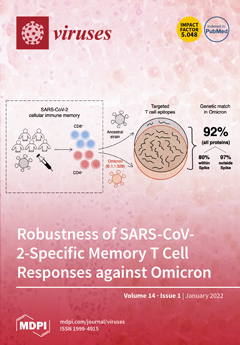Arboviruses remain a significant cause of morbidity, mortality and economic cost across the global human population. Epidemics of arboviral disease, such as Zika and dengue, also cause significant disruption to health services at local and national levels. This study examined 2014–2016 Zika and
[...] Read more.
Arboviruses remain a significant cause of morbidity, mortality and economic cost across the global human population. Epidemics of arboviral disease, such as Zika and dengue, also cause significant disruption to health services at local and national levels. This study examined 2014–2016 Zika and dengue epidemic data at the sub-national level to characterise transmission across the Dominican Republic. For each municipality, spatio-temporal mapping was used to characterise disease burden, while data were age and sex standardised to quantify burden distributions among the population. In separate analyses, time-ordered data were combined with the underlying disease migration interval distribution to produce a network of likely transmission chain events, displayed using transmission chain likelihood matrices. Finally, municipal-specific reproduction numbers (R
m) were established using a Wallinga–Teunis matrix. Dengue and Zika epidemics peaked during weeks 39–52 of 2015 and weeks 14–27 of 2016, respectively. At the provincial level, dengue attack rates were high in Hermanas Mirabal and San José de Ocoa (58.1 and 49.2 cases per 10,000 population, respectively), compared with the Zika burden, which was highest in Independencia and San José de Ocoa (21.2 and 13.4 cases per 10,000 population, respectively). Across municipalities, high disease burden was observed in Cotuí (622 dengue cases per 10,000 population) and Jimani (32 Zika cases per 10,000 population). Municipal infector–infectee transmission likelihood matrices identified seven 0% likelihood transmission events throughout the dengue epidemic and two 0% likelihood transmission events during the Zika epidemic. Municipality reproduction numbers (R
m) were consistently higher, and persisted for a greater duration, during the Zika epidemic (R
m = 1.0) than during the dengue epidemic (R
m < 1.0). This research highlights the importance of disease surveillance in land border municipalities as an early warning for infectious disease transmission. It also demonstrates that a high number of importation events are required to sustain transmission in endemic settings, and vice versa for newly emerged diseases. The inception of a novel epidemiological metric, R
m, reports transmission risk using standardised spatial units, and can be used to identify high transmission risk municipalities to better focus public health interventions for dengue, Zika and other infectious diseases.
Full article






